Ellen is a writer, journalist, and self-proclaimed women’s history geek. Ellen was one of the 100 walkers who were part of the Pasadena Celebrates 2020 in this year’s 2020 Rose Parade on New Year’s Day. The entry celebrates the 100th anniversary of the enactment of the 19th Amendment to the US Constitution. It was a hard-fought battle resulting in women participating in government through voting at every level from local to national. She was kind enough to sit down for an interview where we found out more about her and share in the experience of what it was like to be a part of this historic event.
R: Tell us more about yourself.
ES: I’m a women’s history geek and I’m proud of it. I’m on the board of the National Women’s History Alliance, which is a 40-year-old non-profit that is committed to bringing women back into history. “A woman’s place is in the curriculum” is one of our mottos.
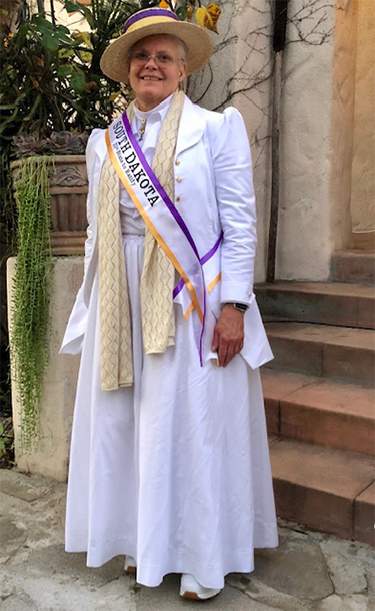
I’m also a journalist and my editor said, “if you ever need to get up to speed on anything you feel like you don’t know much about, get a children’s book about it because they boil it down to the nuggets.” The alliance’s website offers children’s books about suffrage activists. I’m featuring a different African American woman each day on my Facebook page every day in February because we are so uninformed about so many women from history.
I’m also an author. My first book was Beauty Bites Beast. It’s about ending violence against women. It’s been turned into a documentary available on Amazon Prime. One of the points in this work is by not having women in history, it’s easy to be violent toward them. They’re considered to be less important.
R: Admirable work, indeed! So, you were in the Rose Parade this year?
ES: Yes, was I ever!
R: Tell us about your experience.
ES: First of all, we were told that it was impossible for a group of women who didn’t have huge corporate sponsorship to be in the Rose Parade because it is exceedingly expensive. And, there are requirements from the Tournament of Roses Committee that require a certain level of professionalism that big corporate sponsors can afford.
But we raised the money through individuals, and we won the theme trophy for the float! It was such an honor because we had really done it woman-by-woman-by-woman. It was amazing to see this beautiful float. Then, to have 98 women and two men marching behind it like the old suffrage parades was just astonishing!
You know, we got standing ovations from the audience. People stood up as we passed by. They were cheering and some were moved to tears! We saw people with tears streaming down their faces because it was such a beautiful and rich experience of democracy in action.
So, here we were with lots of Recollections outfits. I was running around pre-parade saying “did you get that from Recollections? Did you get this from Recollections?” I took lots of pictures of them. For a lot of women, it was like, “oh! OK!” I wore my Recollections outfit with pride. It was so cool! But I wish it came in white pinwale corduroy. It’s cold at 3 a.m. on New Year’s Day, even in southern California!
R: How did you become involved in the Rose Parade?
ES: I got involved through my affiliation with the National Women’s History Alliance. It’s a great resource for women’s history. We have everything from games and puzzles, and children’s books to scholarly works available through the site.
R: Please share with us a bit of your experience on the day of the parade.
ES: We had to arrive by 3 a.m. and because there are so many security concerns with the parade, we had to all go on a bus even though some of us lived close to the parade route. We all had to gather in a central location and were then taken to the parade route. The parade starts at exactly 8 a.m.
The experience is quite a rush because there are all these people from all over the world that have been camping out for five days so they could get a good spot to see the parade! It’s a 5 ½ mile walk and it’s dynamic.
There are all these people whose life dream is to see the Rose Parade. They’re not there as disinterested bystanders. They’re there because it took them a lot to get there! So, the people in the parade are hyper excited and the people watching the parade are hyper-excited. It’s one of the most emotional and beautiful experiences I ever had. I would be walking and shedding tears because it was so beautiful to have that many women committed to sharing with other people what it took to win the vote.
R: Ellen sent us a link to a video you may enjoy about the suffrage movement and the float. The float footage starts at approximately 6 minutes.
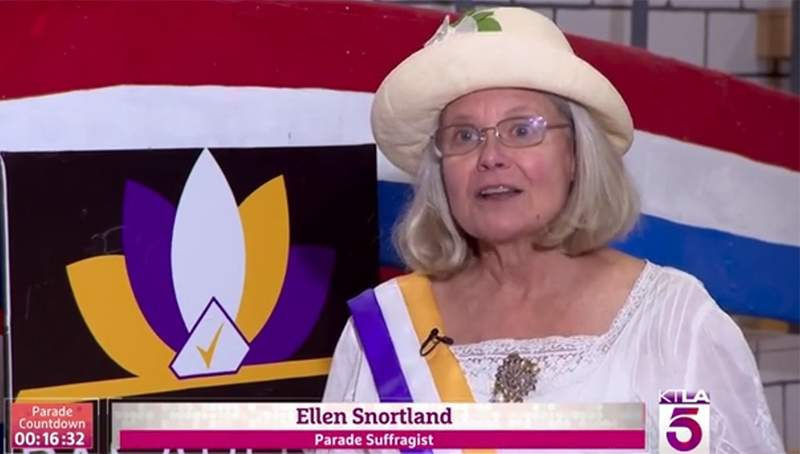
Winning the vote for women was one of the most dynamic experiments in non-violence. Gandhi got his ideas from watching the women in the US and Great Britain because we didn’t kill people. We did acts of civil disobedience. That included a lot of things like chaining ourselves to the White House fence and picketing the White House. Nobody had ever done that before. Women started that. They did hunger strikes and a lot of things that Gandhi got his ideas from. It’s something a lot of people don’t know about because women have been written out of history so much.
The first state where women won the vote was Wyoming. The western states actually did quite well because when you’re running a farm or a ranch, people are very hyper-aware of how valuable women are.
R: Tell us more about your experience walking in the parade.
ES: Wherever we passed by, people stood up and cheered! It was kind of like the wave going through the crowd as we walked along the route. Imagine what it was like for people to see 98 women and two men in period costume. My periodontist said that it was like angels walking by. He turned to his wife and she had tears streaming down her face. You don’t necessarily think of beauty and politics mixing, but that day we did.
R: How long did it take to walk the parade route?
ES: It took a little under two hours to walk the 5 ½ miles.
R: So, what did you wear?
ES: I wore the Hyacinthe. I changed to buttons to reflect the colors of the American suffrage movement. My buttons were gold sunflowers. Gold, purple, and white represented the colors in America. Green, purple, and white were the colors in the UK.
R: Tell us more about the people on the float.
ES: There was the great-granddaughter of Ida B. Wells who was an African American suffragist. The great-great-granddaughter of Elizabeth Cady Stanton and a distant relative of Susan B. Anthony. The great-great-great grandniece of Harriet Tubman was also on the float as was the great-great-great-grandson of Frederick Douglas. Not many people know that Frederick Douglas was a huge women’s rights proponent.
Although the theme was white, one person on the float wore black. She was the great-great-granddaughter of Elizabeth Cady Stanton. She wore black because when Elizabeth Cady Stanton was alive, white was not yet associated with winning the right to vote, and she always wore black.
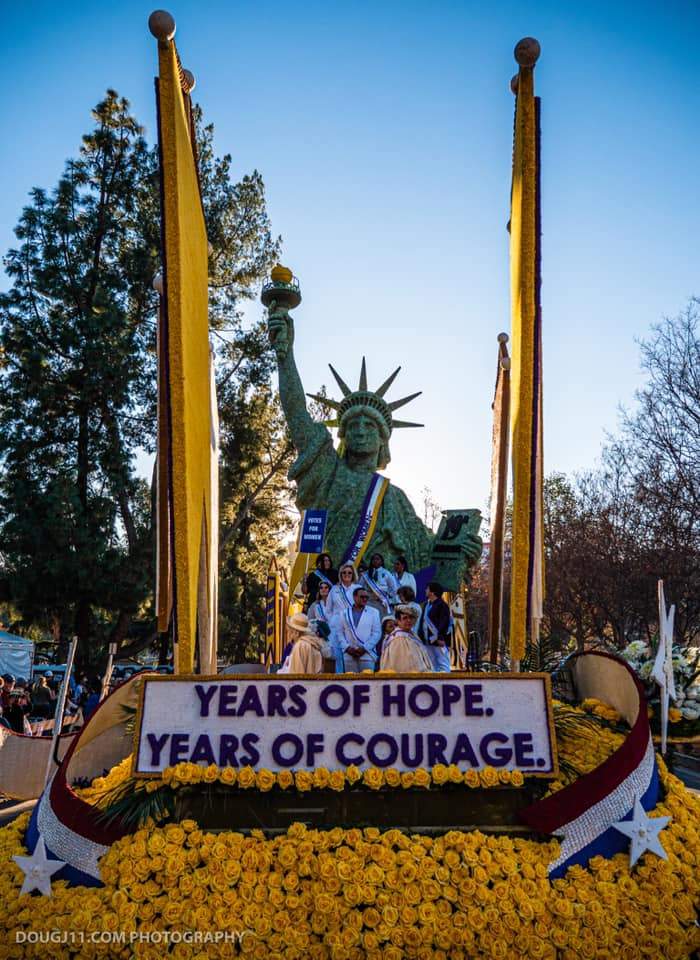
On a side note, did you know that the Iroquois were the tutors to Lucretia Mott and Elizabeth Cady Stanton? Lucretia Mott was one of our foremothers for the vote. She was a Quaker and she and her husband decided to become missionaries to the Iroquois. When they went to talk to the Iriquois, the Iriquois ended up teaching Lucretia Mott about equality because the women of the Iroquois were completely equal. They couldn’t believe that the European women weren’t!
Q: Do you know anything about the two men who were walkers in the parade?
A: One of the two men who were walking is the son-in-law of the woman whose idea this was in the first place. Her name is Nan Johnson. She’s in her 90s and living in an assisted living facility. I’m a columnist in a local paper.
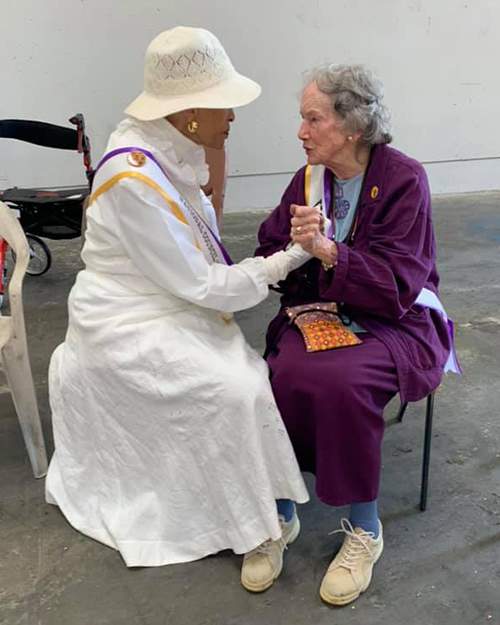
from the Outwalkers’ Facebook page
R: Here’s an excerpt from that article, used with Ellen’s permission, about the parade, Nan Johnson’s connection, and others who have a close connection to this year’s suffrage celebration at the 2020 Rose Parade.
The float’s name is “Years of Hope, Years of Courage,” and the motto is “Upon their shoulders, we won the vote. Upon our shoulders, we protect the vote. We celebrate and build for the future.”
… thanks to the efforts of a small but mighty group of women led by Nan Johnson, a retired professor at Rochester University in New York, the dream of having a Rose Parade float honoring women’s suffrage has become a reality. It is also a dream come true for many ardent women’s history and rights activists. Ms. Johnson and too many people to name got the float project rolling, while Martha Wheelock — a board member of the National Women’s History Alliance, a 501c3 — has been the liaison…”
R: Thank you for sitting down with us today. How wonderful it is to get to know a Recollections customer. How exciting it is to share in your experience with the float celebrating 100 years of women’s suffrage in the 2020 Rose Parade!
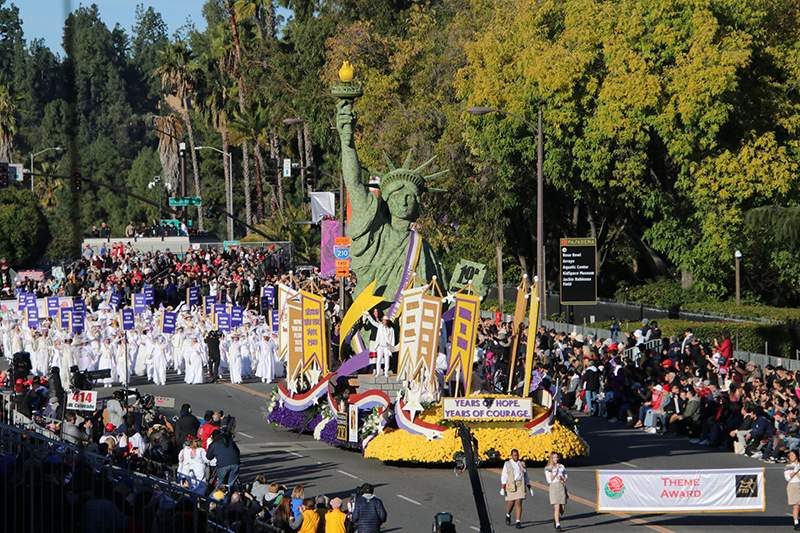


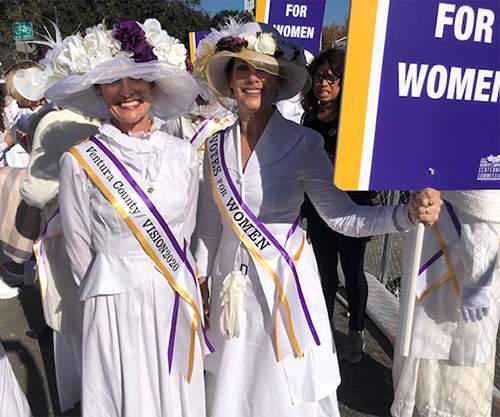
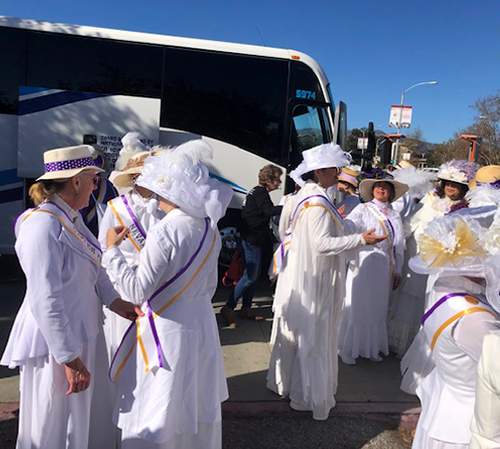
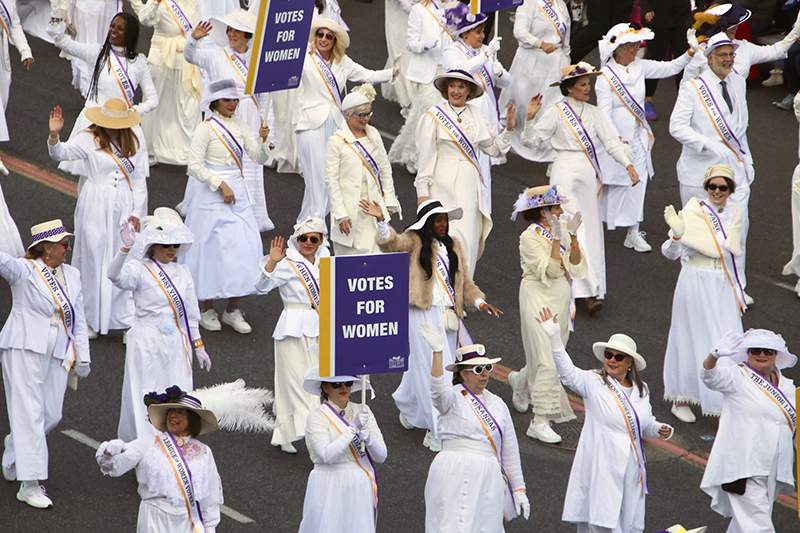







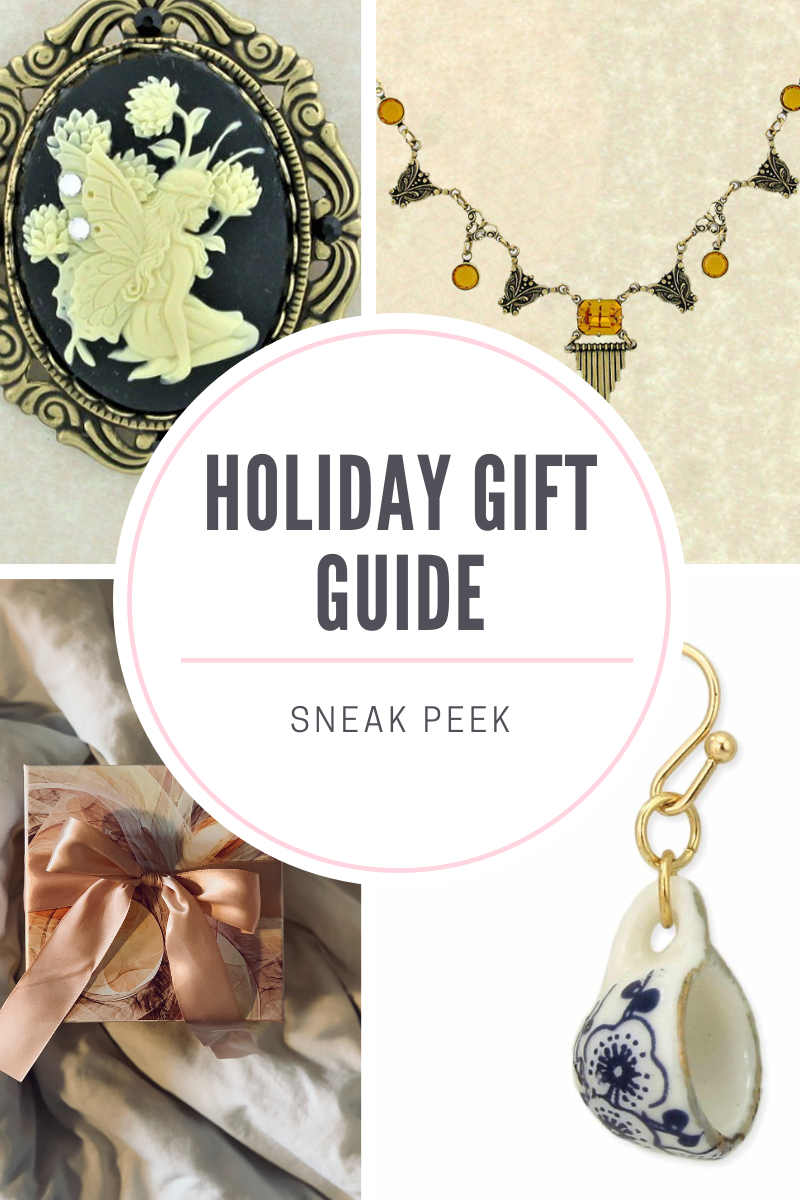

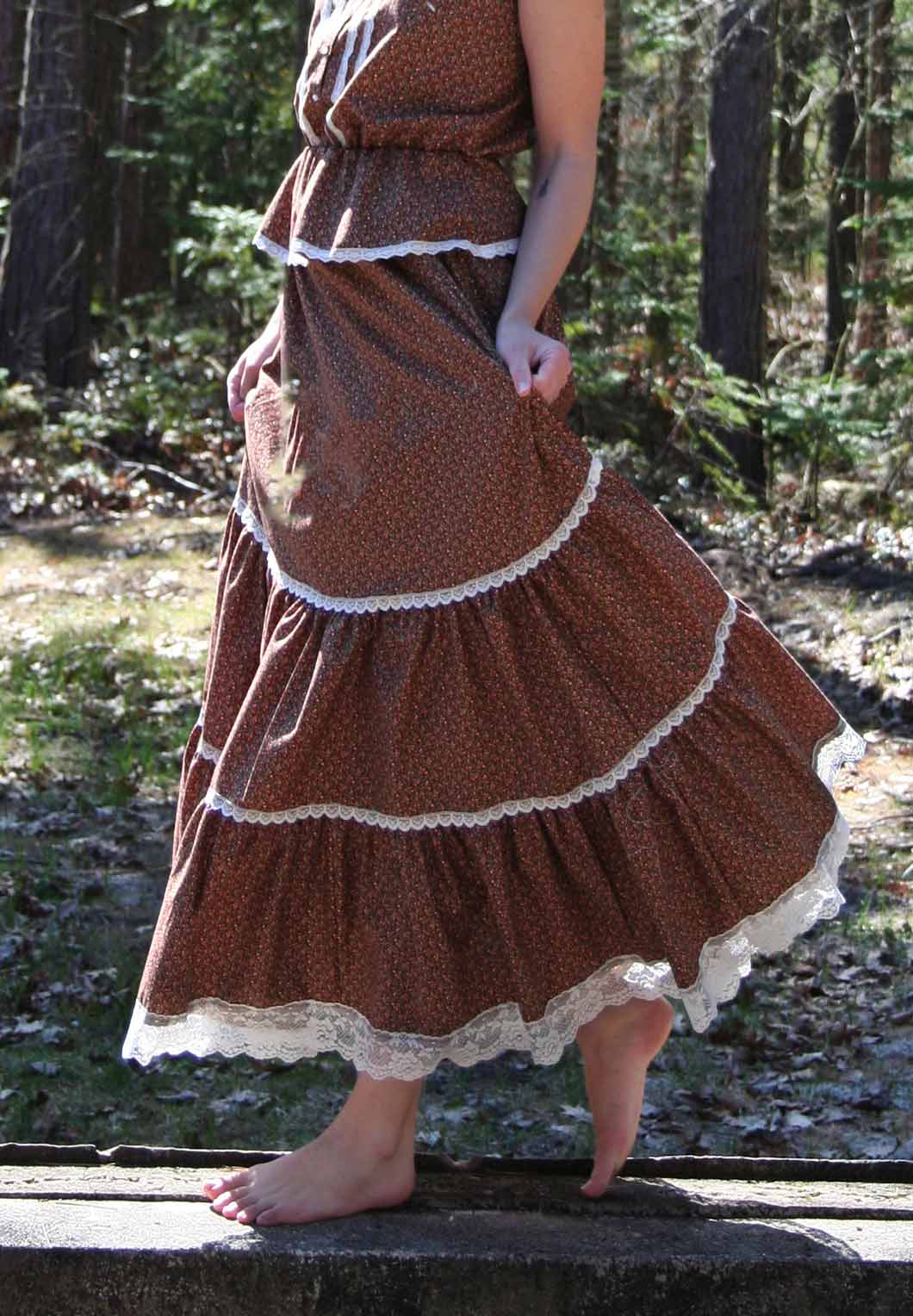
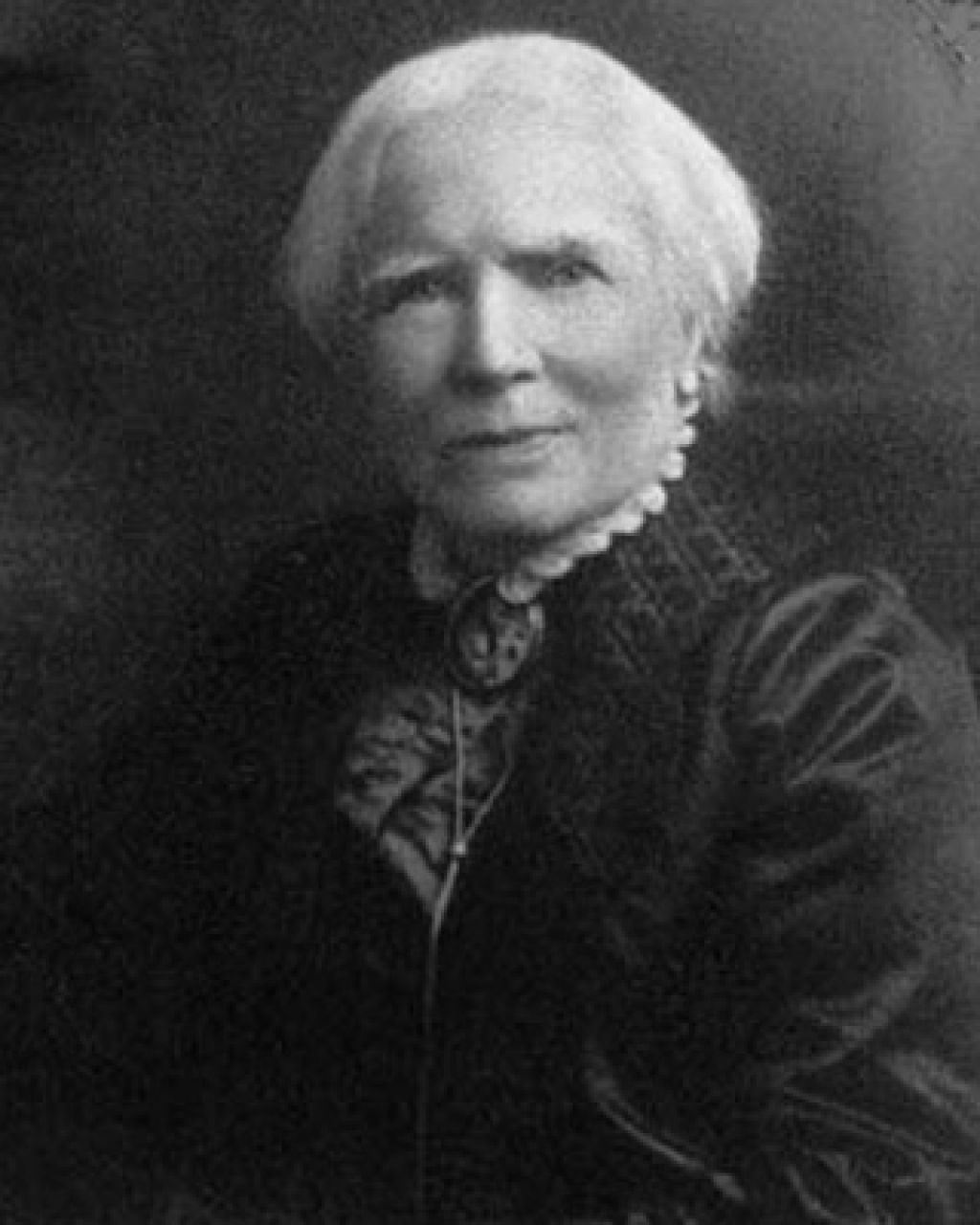
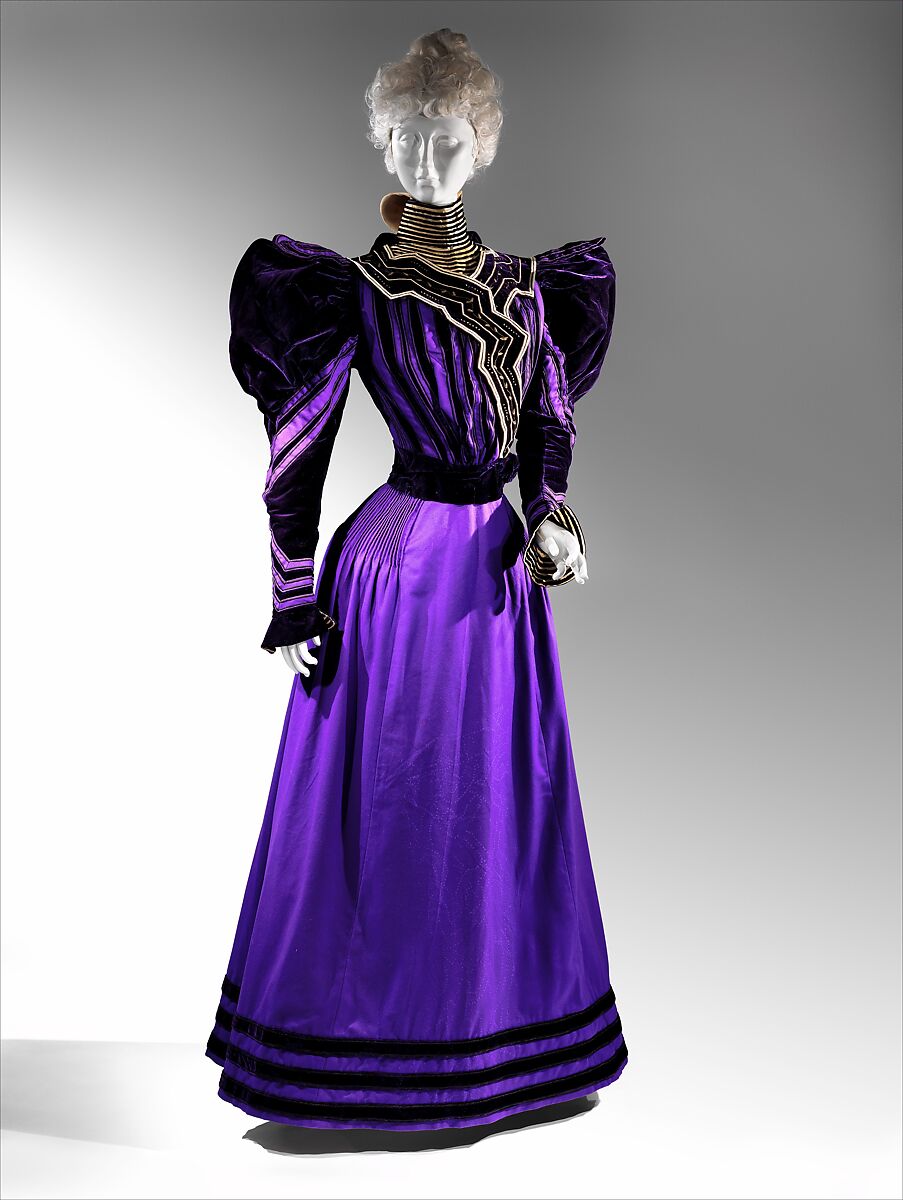
Leave A Comment